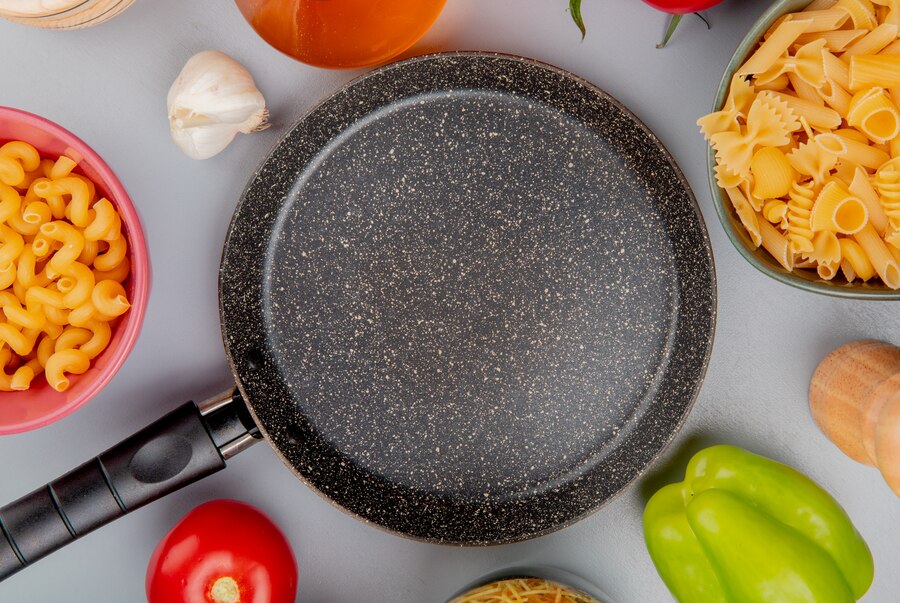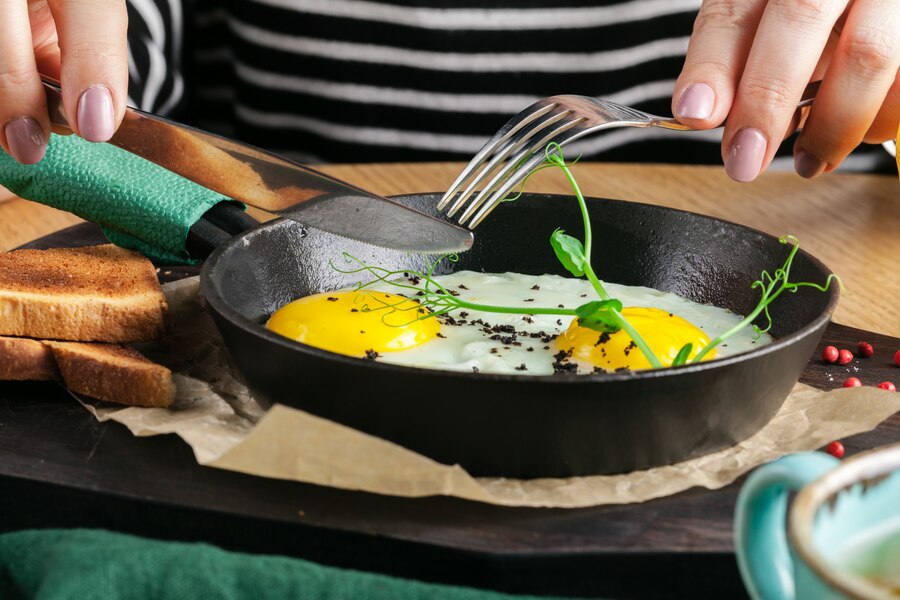Skillet pans, also known as frying pans or skillets, are versatile kitchen tools that have been a staple in households for generations. Whether you’re whipping up a quick breakfast or preparing a gourmet dinner, a skillet pan is an essential item in any kitchen. In this article, we’ll explore everything you need to know about skillet pans, from their types and benefits to how to choose the right one and tips for using them effectively.
Skillet pans are shallow, flat-bottomed pans with slanted sides, typically made of materials like cast iron, stainless steel, or aluminum. They come in various sizes and are widely used for sautéing, frying, searing, and even baking.
Non-stick Skillet Pans
Non-stick skillet pans are coated with a layer of polytetrafluoroethylene (PTFE), commonly known as Teflon, to prevent food from sticking. They are ideal for cooking delicate items like eggs, pancakes, and fish, requiring less oil or butter for cooking.
Cast Iron Skillet Pans
Cast iron skillet pans are prized for their durability and ability to retain heat evenly. With proper seasoning and care, they develop a natural non-stick surface and can be used for frying, searing, baking, and even outdoor grilling.
Stainless Steel Skillet Pans
Stainless steel skillet pans are known for their sleek appearance and resistance to corrosion. While they don’t have the non-stick properties of other materials, they are excellent for browning and deglazing, making them versatile for various cooking techniques.
Versatility
Skillet pans can handle a wide range of cooking tasks, from searing meats to sautéing vegetables and even baking desserts. Their versatility makes them indispensable in the kitchen.
Even Heat Distribution
Quality skillet pans distribute heat evenly across the cooking surface, ensuring consistent cooking results. This even heat distribution prevents hot spots and allows for precise control over the cooking process.
Durability
Whether you opt for a non-stick, cast iron, or stainless steel skillet pan, you can expect durability that will withstand years of use. Proper care and maintenance can extend the lifespan of your skillet pan even further.
Size
Consider the size of your skillet pan based on your cooking needs and the number of people you typically cook for. A smaller pan is suitable for individual meals or side dishes, while a larger pan is ideal for family-sized portions or entertaining guests.
Material
Choose a skillet pan material that suits your cooking preferences and needs. Non-stick pans are convenient for easy cleanup, while cast iron pans offer unparalleled heat retention. Stainless steel pans provide durability and versatility for various cooking techniques.
Handle Design
Pay attention to the handle design of your skillet pan, ensuring it is comfortable to grip and securely attached to the pan. Some skillet pans feature ergonomic handles with heat-resistant coatings for safe and easy handling.
Preheating
Preheat your skillet pan before adding ingredients to ensure even cooking and prevent sticking. Allow the pan to heat up gradually over medium heat for best results.
Proper Cleaning and Maintenance
Follow the manufacturer’s instructions for cleaning and maintaining your skillet pan. Avoid using abrasive cleaners or metal utensils that can damage the cooking surface. For cast iron pans, regularly season them with oil to maintain their non-stick properties.
Cooking Techniques
Experiment with different cooking techniques, such as searing, braising, or stir-frying, to make the most of your skillet pan. Adjust the heat and cooking time as needed to achieve the desired results.
Breakfast: Perfectly Fluffy Pancakes
Start your day off right with fluffy pancakes cooked to perfection in your skillet pan. Serve them with maple syrup, fresh berries, or a dollop of whipped cream for a delicious breakfast treat.
Lunch: One-Pan Chicken Fajitas
Whip up a quick and easy lunch with one-pan chicken fajitas cooked in your skillet pan. Simply sauté seasoned chicken, bell peppers, onions, and spices until tender and flavorful. Serve with warm tortillas and your favorite toppings for a satisfying meal.
Dinner: Sizzling Steak and Vegetable Stir-Fry
Indulge in a flavorful dinner with sizzling steak and vegetable stir-fry cooked in your skillet pan. Marinate thinly sliced steak in a savory sauce, then stir-fry with colorful vegetables until tender-crisp. Serve over rice or noodles for a hearty and nutritious meal.
Overcrowding the Pan
Avoid overcrowding your skillet pan with too many ingredients, as this can prevent proper browning and lead to uneven cooking. Cook in batches if necessary to ensure even heat distribution and optimal results.
Using Metal Utensils on Non-stick Pans
Avoid using metal utensils on non-stick pans, as they can scratch and damage the coating. Opt for silicone, plastic, or wooden utensils instead to preserve the integrity of your non-stick surface.
Neglecting Seasoning for Cast Iron Pans

Regularly season your cast iron skillet pan with oil to maintain its non-stick properties and prevent rusting. Neglecting seasoning can lead to food sticking and a decline in cooking performance over time.
Conclusion
Skillet pans are indispensable tools in any kitchen, offering versatility, even heat distribution, and durability for a wide range of cooking tasks. Whether you prefer non-stick, cast iron, or stainless steel, choosing the right skillet pan can elevate your culinary creations to new heights.
FAQs
Can I use my skillet pan in the oven?
Yes, many skillet pans are oven-safe, but it’s essential to check the manufacturer’s instructions for specific temperature limits and guidelines.
How do I clean a cast iron skillet pan?
Clean your cast iron skillet pan with hot water and a stiff brush, then dry it thoroughly and re-season with oil to maintain its non-stick surface.
Can I use metal utensils on stainless steel skillet pans?
Yes, stainless steel skillet pans can withstand metal utensils without scratching, making them ideal for cooking and stirring various ingredients.
What’s the best way to season a cast iron skillet pan?
To season a cast iron skillet pan, coat it with a thin layer of oil and bake it in the oven at a low temperature for an hour, then repeat the process several times for optimal results.
Are non-stick skillet pans safe to use?
Yes, non-stick skillet pans are safe to use when used properly and not overheated. Avoid using metal utensils or abrasive cleaners that can damage the non-stick coating.
